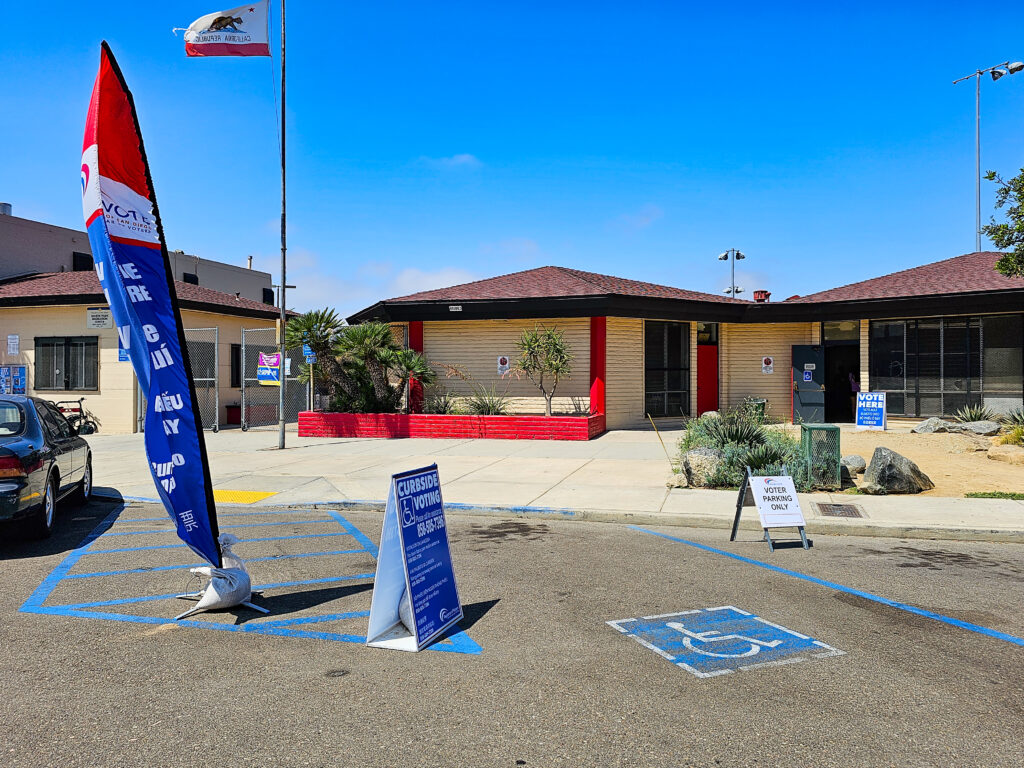Before SARS-CoV-2 (severe acute respiratory syndrome Coronavirus 2)/COVID-19 provided California with the excuse to issue mail-in ballots, voting was straightforward: The County assigned a polling place, where you would go to vote. Volunteers had a list of registered citizens from which your name would be checked off and then you would do your civic duty. Simple. Straightforward.
In 2020, I chose to vote in person—and I brought along my mail-in ballot, which would have been accepted had I not requested to vote onsite. After confirming my identity, the election volunteer provided ballot and place to vote. Simple. Straightforward. But the experience my wife and I had voting today was nothing like this or during elections 2021 and 2022. By every measure, looks to me like the polling place process is engineered to deter in-person voting.
Tomorrow is the official “Fourth Supervisorial District Primary Election” day. Four people are running to be a member of the District No. 4 Board of Supervisors. In-person polls opened on Aug. 5, 2023. My wife and I chose to cast a ballot rather than post it: The polling place is a good walk—and the weather was perfect for doing just that.
Annie and I arrived, were welcomed, and were asked if we would like to vote. Yes—and I informed that we had brought our mail-in ballots. Someone asked that we sit down, and we were handed clipboards with an information sheet to fill out. Name? Address? Phone number? Shouldn’t the County already have this information, some of which is on our mail-in ballot envelopes? No one asked to see identification.
We were then ushered to a table where women waited before digital tablets (iPads). My volunteer looked over the info sheet and then manually input my details. I have only voted in every California election since 2008, and this information isn’t already accessible? She turned the screen, asked me to verify my information, and noted a four-digit number that I would be asked to verify several times during the process that followed.
Once again, no one asked to see identification. I could have been anyone pretending to be anyone, particularly in context of what else occurred. The lady asked to see my mail-in ballot. Okay, this is where it gets cast, I thought, with some sense of relief. But no. Without warning, she pulled out a red marker and in huge letters scribbled SURRENERED across the ballot envelope. Then she tore it partially in half and assured me this was for voting integrity. She spoiled the ballot! What the frak!
I was given a folder for my in-person ballot and ushered to the voting machine. Electronic. Touchscreen. Make your choice, print ballot, put in the folder, and turn into a volunteer. Among the information bits: Name of the person I chose and a QR code.
And still no one bothered to verify my identity, or Annie’s. We could have walked off the street without mail-in ballots and undergone similar process. We could have been anyone. Someone could steal a ballot—say, from an outgoing mailbox—walk in, surrender the thing, and cast a different vote.
Being the day before the election, with but a single seat on the ballot, there were no waiting lines. But what if more people show up tomorrow, or this were the 2024 election cycle? Lines would be massive, because the process we paraded through has too many steps. Statistically, Democrats are more likely to vote by mail and Republicans to do so in person. Ponder that, for a so-called Blue state.
Or, stripping back partisanship maneuvering, the process could be nothing more than encouraging mail-in voting while punishing those people choosing to do so in person. Then there’s the question of who is really casting the ballot when identities aren’t verified.
I used Samsung Galaxy S23 Ultra for the Featured Image. Vitals: f/1.7, ISO 10, 1/1200 sec, 23mm (film equivalent); 11:17 a.m. PDT. Yep, that’s where we voted in North Park.
